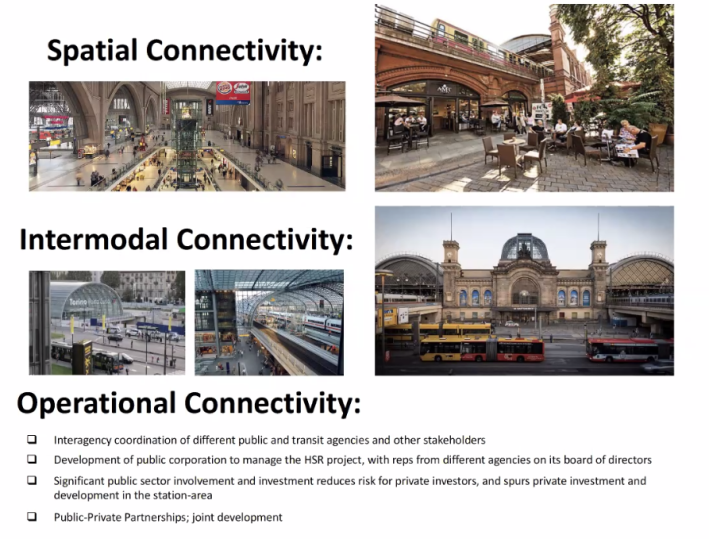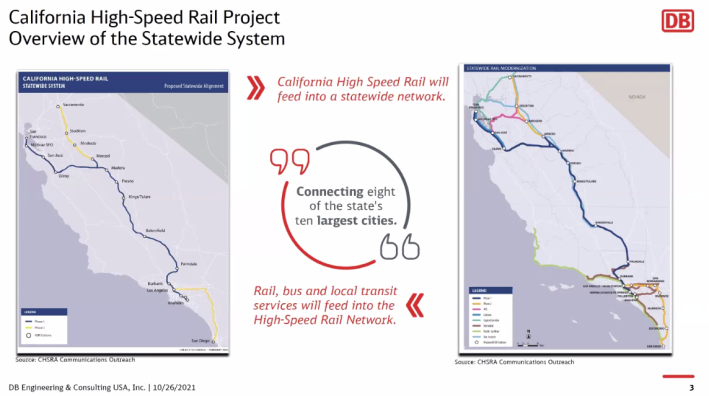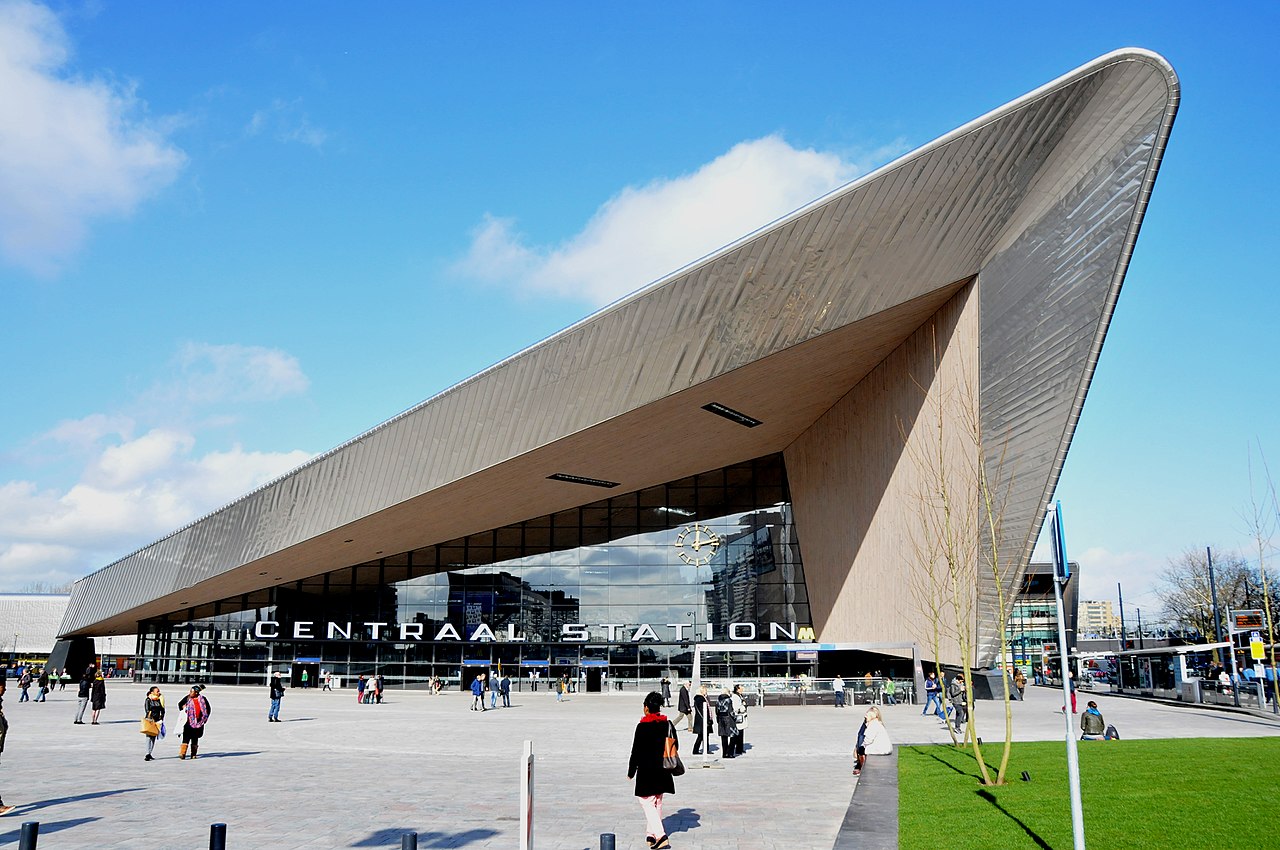Note: GJEL Accident Attorneys regularly sponsors coverage on Streetsblog San Francisco and Streetsblog California. Unless noted in the story, GJEL Accident Attorneys is not consulted for the content or editorial direction of the sponsored content.
"It's about the real estate, stupid," a wise rail planner once said. Meaning one can build all the low, medium, or high-speed rail in the world, and it will fail if the interaction between its stations, the rest of the transit network, and the city fabric around it aren't fully considered.
In other words, don't let people who plan airports design your train stations. "The biggest difference with airports is they tend to be inward-oriented, while train stations have to be outward oriented," explained Deike Peters with Soka University of America, during a SPUR talk today on how high-speed rail could do the most to benefit San Francisco, San Jose, and Los Angeles.
Peters and others on the panel advocated for looking at successful station designs in Europe, such as in Lille, Munich, Berlin, and Rotterdam, seen in the lead image. One does not see giant parking lots. One does see cafes, walkways, bike infrastructure, basic services, and local and regional transportation all linked together.

Also key is that high-speed rail has to be seen as a larger network, not just a line between Los Angeles and San Francisco (or Berlin and Munch, Paris and Lyon, etc). HSR should be seen as a "an integrator among all the counties of the state, to unify them, activate them, in one statewide rail modernization plan," explained Agustin Arizti of ARUP. In other words, HSR is a way to unite Caltrain, ACE, Amtrak, Los Angeles Metro, and even San Diego's transit lines into a single system. "Nothing in the state has been so far reaching" in connecting all those systems, said Arizti.
That is consistent with Caltrain's electrification efforts and plans to improve ACE, which aim to "blend" or integrate services, through standardized electrification, platform heights, some track sharing, schedule coordination, etc. The chart below shows the core of the HSR project on the left and then overlays it with other planned and existing commuter and regional rail systems that will integrate with it to one extent or another.

The challenge is for the three biggest cities - Los Angeles, San Jose, and San Francisco - to continue to grow their local and regional transit networks and downtown stations in ways that prepare for high-speed rail and the transformation it can bring. "We have to be thinking about track and transit infrastructure - how they are physically going to connect to each other and other modes," said SPUR's Laura Tolkoff. "How do we do these earlier projects [in a way that doesn't] foreclose opportunities?"
A good example of this, said the panelists, is the Salesforce Transit Center and the development around it. Towers went up. A new bus terminal with a park on top was completed. And underneath, a new train station box was constructed to allow for HSR's eventual arrival. Caltrain is being electrified with compatibility in mind. LINK 21, a plan that includes a second-transbay tube, is prioritizing standard rail that would be compatible with HSR and Caltrain.
San Jose is developing the area around Diridon Station with the Google Development. "San Jose has completed two major planning efforts in recent years, focusing on the station elements, tracks, and the space between them," said Tolkoff. "Many plans are starting to get built."

And what about Los Angeles? Arizti said Los Angeles will be getting high-speed rail faster than many people think. "Very soon, though, after the initial phase begins operation," he explained. When that happens, "Los Angeles will receive hundreds of trains a day connecting it with the rest of the state." He says that a properly integrated HSR system will also serve stations going south to San Diego and Orange County, allowing one-seat rides from all over the Southland to points north.
Los Angeles, for its part, has developed a plan to allow trains to go directly through L.A. from the north and continue south (right now they have to stop, reverse, and loop around Union Station to head south). Kelli Bernard of AECOM talked about L.A.'s efforts to restore and develop its river, which is adjacent to Union Station, as a way to revitalize the area. "The LA River Gateway plan is to provide a visionary plan to make the river be the front door to the city," she said. "We saw the HSR link and river restoration as tools to really create a more sustainable and walkable community."

In Streetsblog's view, the contrast between L.A. and the Bay Area are stark. The L.A. River project is nice, but it's the one city that's made no effort to prep its commuter rail to be compatible with HSR (in fact, L.A. seems to be actively doing the opposite). And the through-running track project isn't new: it amounts to a relatively simple but essential rail bridge across the 101 that should have been completed ages ago, regardless of HSR. And even in the renderings of the future station area, it looks as if there is no plan to cap the 101 freeway and reduce the impact of its ridiculously overbuilt ramp complex, which cuts off Union Station from the rest of downtown Los Angeles.
For more events like these, visit SPUR’s events page.





